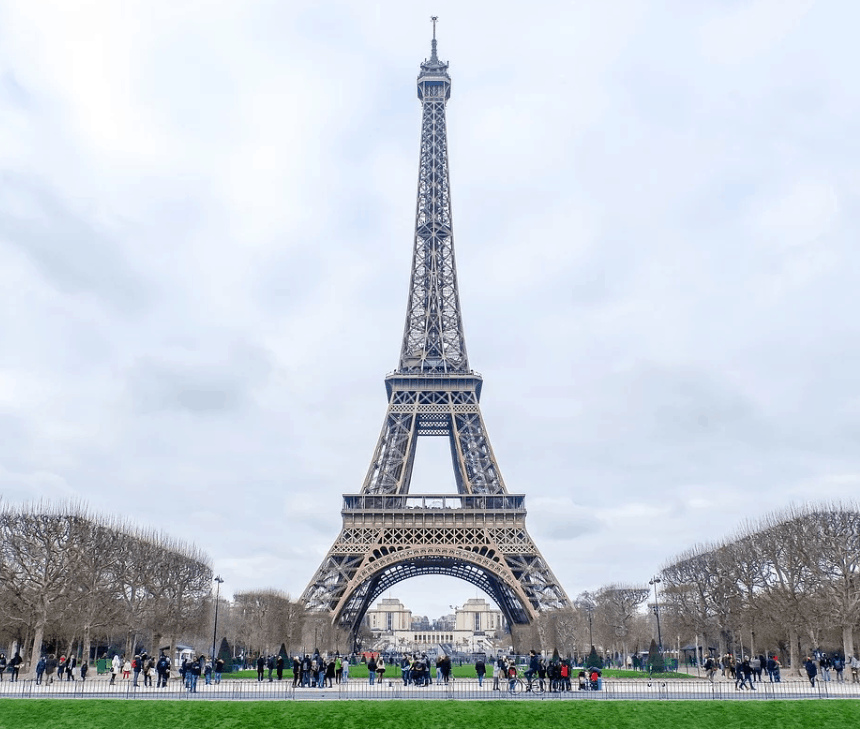Initially ridiculed, but eventually became one of the most iconic and recognized structures ever created.
In this post, You’ll discover the ultimate list of facts about the Eiffel Tower in Paris, one of the most famous towers in the world!
1. It was built because of the revolution
1889 marked the centennial of the start of one of the most significant periods in modern history, the French Revolution.
To commemorate the Storming of the Bastille, an “Exposition Universelle” was proposed, and a centerpiece was needed. An impressive one.
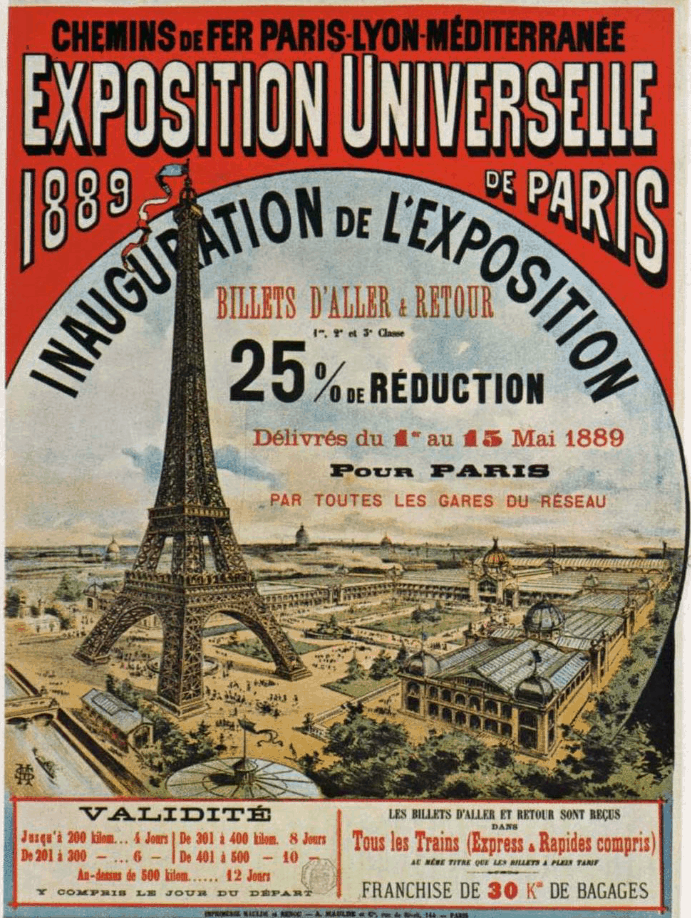
2. The French Revolution wasn’t the only reason
France suffered an economic recession during the 1880s, and an “Exposition Universelle” was seen as a way to attract foreign investments, stimulate the economy and pull the country out of it.
It’s fair to conclude that this was a good strategy as the exposition attracted 61,722 official exhibitors, of whom 25,000 were from outside of France.
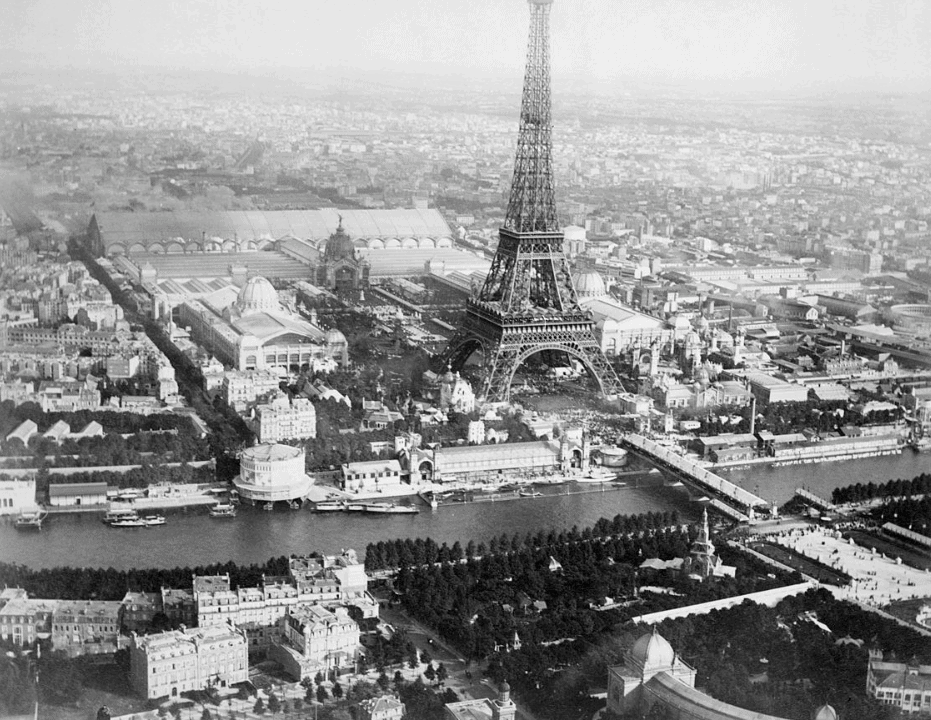
3. The tower was named after the official creator
Gustave Eiffel was a French civil engineer and architect, and he is the one who founded the company “Compagnie des Établissements Eiffel.”
The tower was named after him.
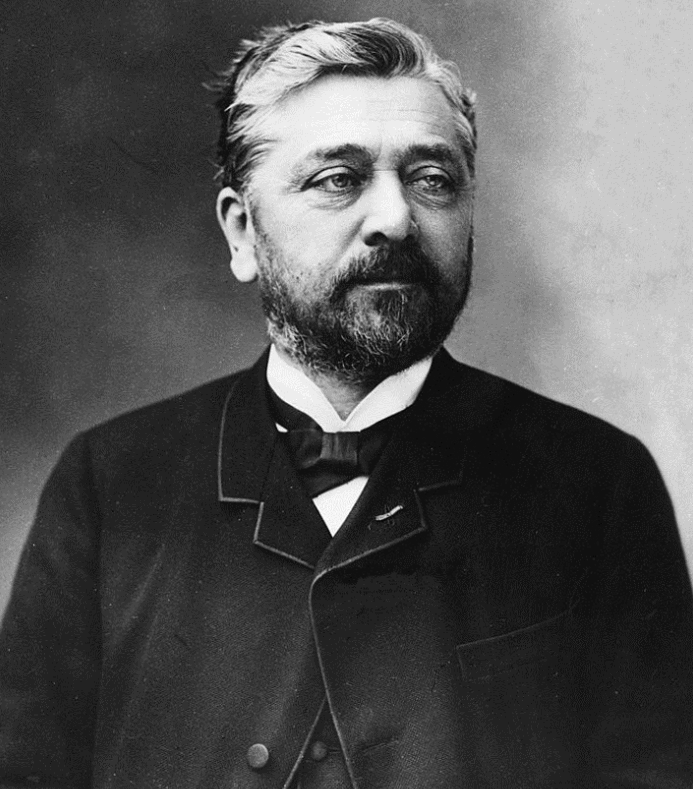
4. The design was created by 2 employees
Even though Gustave Eiffel is recognized as the official creator of the Eiffel Tower, he didn’t actually create the design.
Two of his employees, Maurice Koechlin and Emile Nouguier, started discussing a design for the centerpiece of the Exposition Universelle of 1889 as early as 1884.
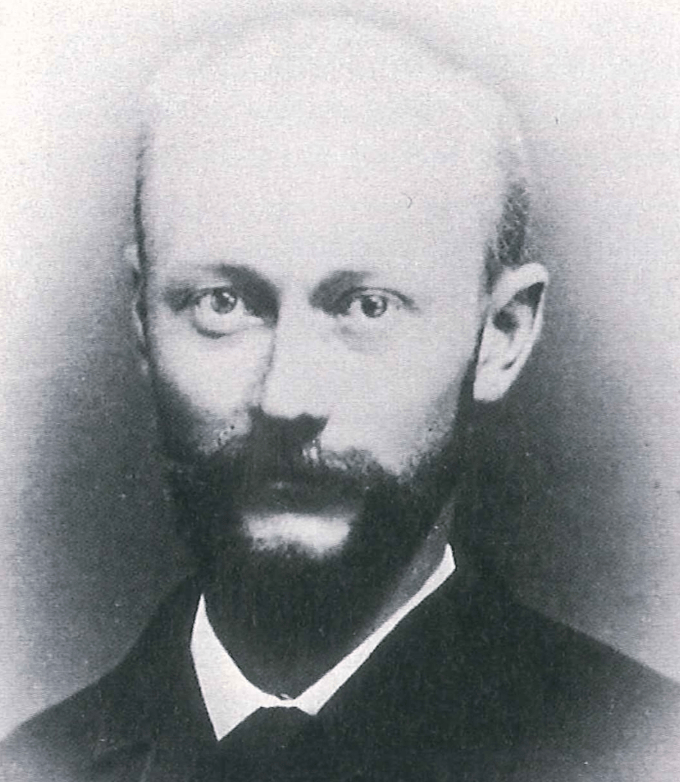
5. Eiffel didn’t like the original design
The original drawing of the Eiffel Tower was created in May 1884, and when Gustave Eiffel laid eyes on it, he didn’t really like it. he did, however, order Koechlin and Nouguier to study how they could improve the design.
Maurice Koechlin, he drew the design described it as “a great pylon, consisting of four lattice girders standing apart at the base and coming together at the top, joined together by metal trusses at regular intervals”
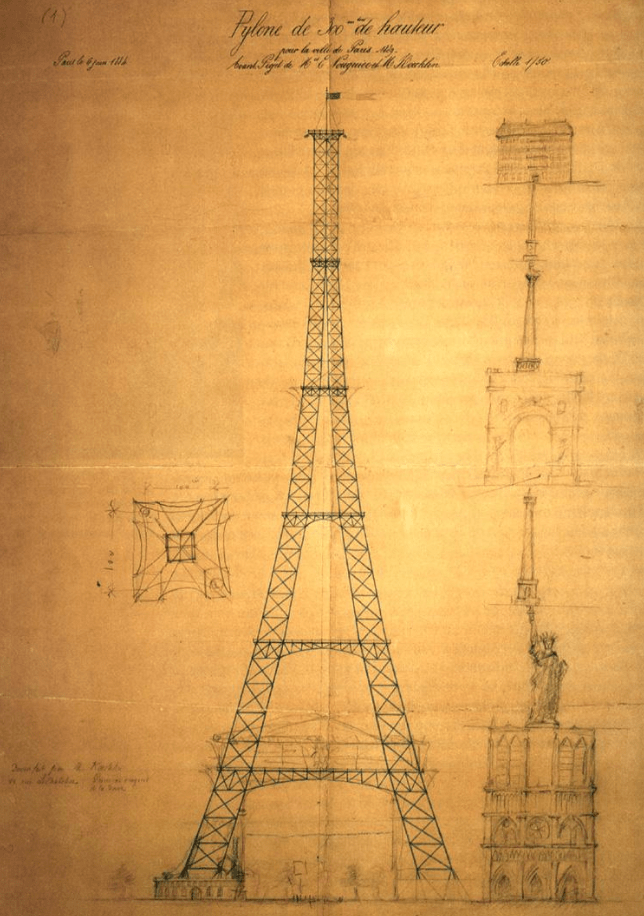
6. They got the help from another reputable architect
As you can see from the initial drawing, the Eiffel Tower looked a bit flat. So the goal now for Koechlin and Nouguier was to improve it in such a way that it got Eiffel’s approval.
For this, they asked the help of Stephen Sauvestre, another French architect who had just finished a project in Tours named the “Hotel Beranger.”
Apart from choosing the color of the tower, he also added the ornated arches at the base of the tower, the glass pavilion on the first level, and a small dome (cupola) at the top of the tower. These additions were enough to convince Eiffel to go along with making the design public.

7. Eiffel didn’t waste time to buy the patent
The initial design was created in May 1884 by Maurice Koechlin and Emile Nouguier. It didn’t take more than a few months for Sauvestre to make the improvements needed to get Eiffel’s approval.
So what was the first thing Gustave Eiffel did?
He bought the rights to the patent of the design and it was first exhibited publicly at the Exhibition of Decorative Arts just a few short months later in the autumn of 1884.
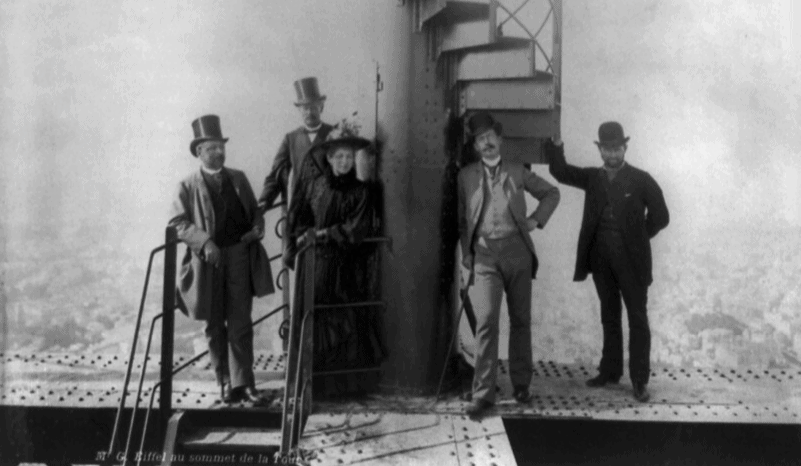
8. Why was the Eiffel Tower called the Eiffel Tower?
An important fact about this is that it was on public display under the company’s name, the Compagnie des Établissements Eiffel.
Since Gustave Eiffel had bought the patent for the design, he was able to call the tower after himself, even though he didn’t actually create the design and simply reviewed and approved it.
Pretty clever, right?
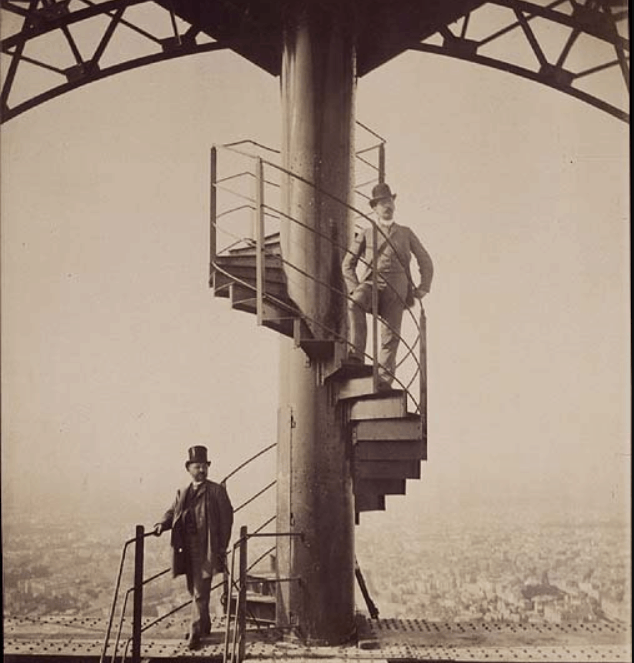
9. Inspiration for the design came from New York
One of the most interesting facts about the Eiffel Tower is that it got its inspiration from a tower that was built in New York City in 1853 called the “Latting Observatory.”
The Latting Observatory was an iron-braced wooden tower that was built in 1853 for the Exhibition of the Industry of All Nations, and that stood 315 feet (96 m) tall. It subsequently burned down in 1856.
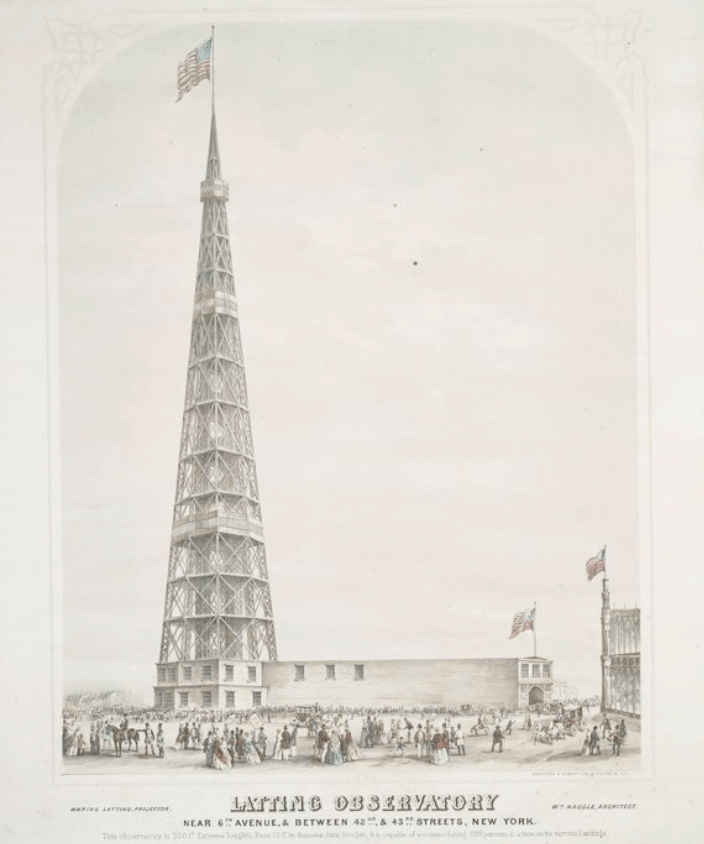
10. Gustave Eiffel didn’t get the required budget
When the decision was made for the centerpiece of the Exposition Universelle of 1889 and a contract was finally signed on January 8, 1887, it was time to award the budget.
A committee had been established and it decided that it would only award 1.5 million Francs to the construction of its centerpiece.
Important fact: That was less than 1/4 of the estimated 6.5 million Francs it was estimated that the construction of the Eiffel Tower would cost!
After all, a lot of buildings were to be constructed and France was in a deep recession in the 1880s.
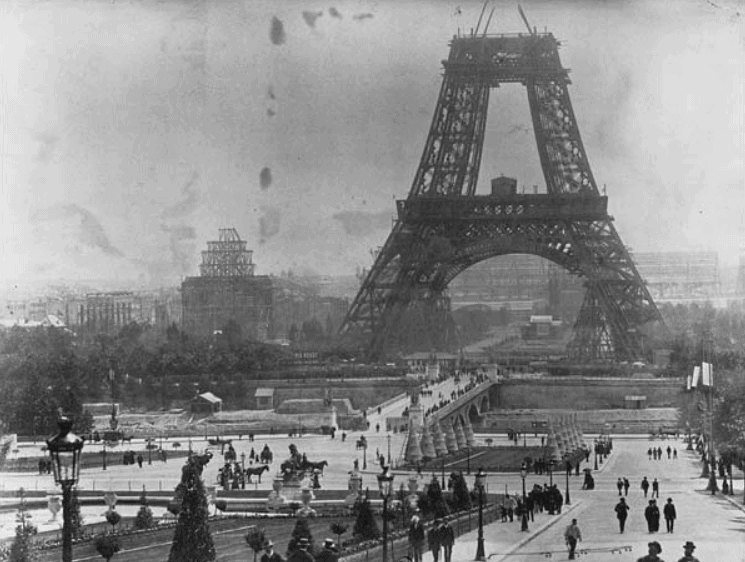
11. Gustave Eiffel made a lot of money from his tower
Because he didn’t receive the budget needed for its construction, Gustave Eiffel put up half of the money himself. In return, he would receive the income generated during the exposition and for the next 20 years.
He signed the contract in his own name. This way he was able to set up a separate company to manage the tower.
Gustave Eiffel was a very smart man!
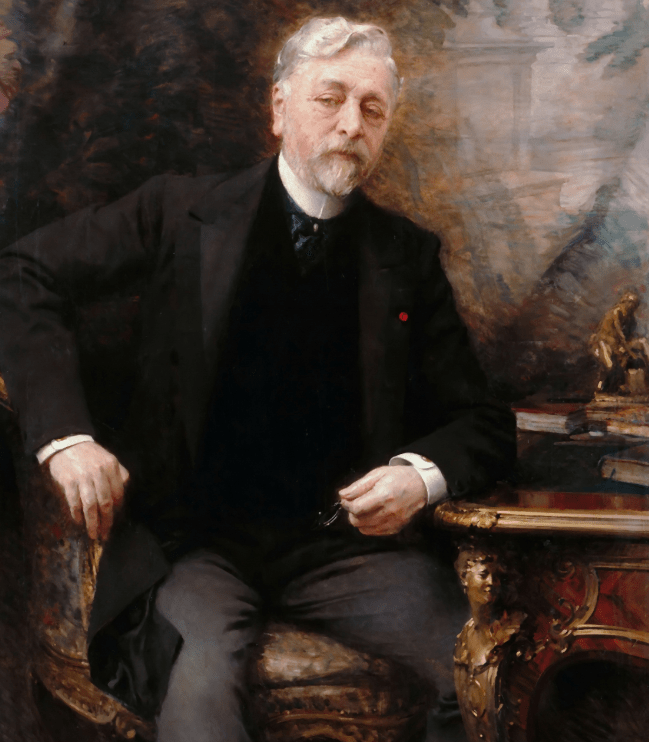
12. The Tower was supposed to be destroyed in 20 years
Because Gustave Eiffel managed to get a contract that ensured he could pocket the income of the Eiffel Tower for the next 20 years, it had to remain in place for this long.
One of the most remarkable facts about the Eiffel Tower is that it was supposed to be disassembled shortly after the Exposition Universelle was finished.
It’s most likely that he was secretly hoping it would become such a success that the decision to destroy the tower would be changed. After all, 20 years is a long time to change people’s minds.
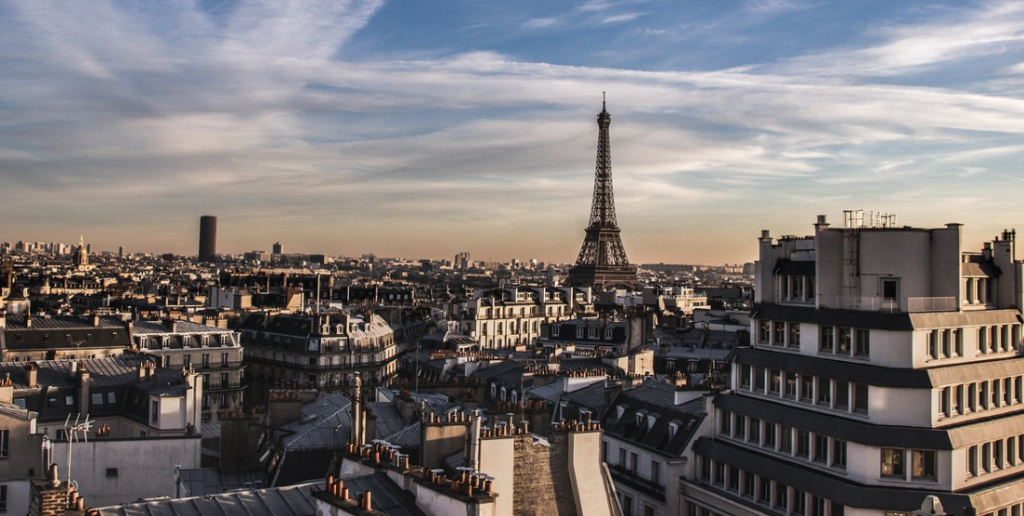
13. A storm of protest ensued
Some people simply didn’t believe that it would be possible to construct a building over 300 meters high. After all, it had never been done before.
The strongest criticism, however, came from an artistic point of view. It went that far that a “Committee of 300” was established and a petition was created called “Artists against the Eiffel Tower.” This group of protestors was led by prominent French architect Charles Garnier, best known for his “Garnier Palace.”
On February 14, 1887, the petition was published in “Le Temps,” the leading French newspaper at that time:
We, writers, painters, sculptors, architects and passionate devotees of the hitherto untouched beauty of Paris, protest with all our strength, with all our indignation in the name of slighted French taste, against the erection … of this useless and monstrous Eiffel Tower … To bring our arguments home, imagine for a moment a giddy, ridiculous tower dominating Paris like a gigantic black smokestack, crushing under its barbaric bulk Notre Dame, the Tour Saint-Jacques, the Louvre, the Dome of Les Invalides, the Arc de Triomphe, all of our humiliated monuments will disappear in this ghastly dream. And for twenty years … we shall see stretching like a blot of ink the hateful shadow of the hateful column of bolted sheet metal.
Part of the petition created by “The Committee of 300” in protest of the Eiffel Tower’s construction.
It didn’t seem likely that the Eiffel would survive after 20 years, right?
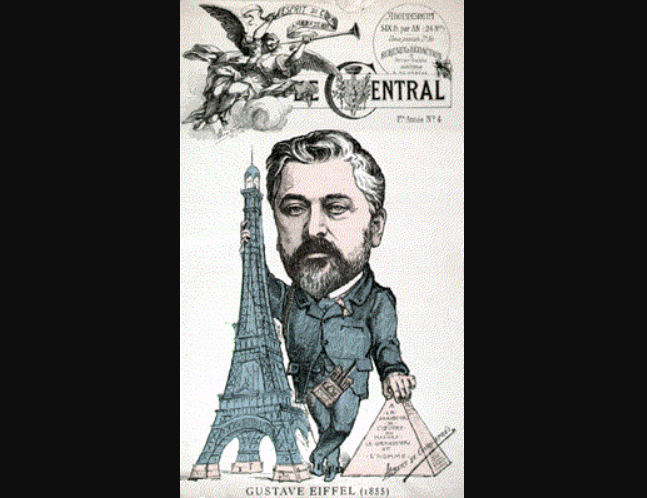
14. Gustave Eiffel wasn’t phased by the protest
One of the remarkable facts about the protest is that its leader, Charles Garnier, was actually a member of the committee that approved the tower in the first place.
He didn’t seem to have raised any objections then.
Gustave Eiffel, smart as he was, simply knew that the tower would gain recognition after it was built and the protests would gradually fade out and actually turn into admiration 2 decades later.
He quoted in response to the protests:
It was premature to judge the effect of the tower solely on the basis of the drawings.
Gustave Eiffel knew that the effect would turn positive as time passed.
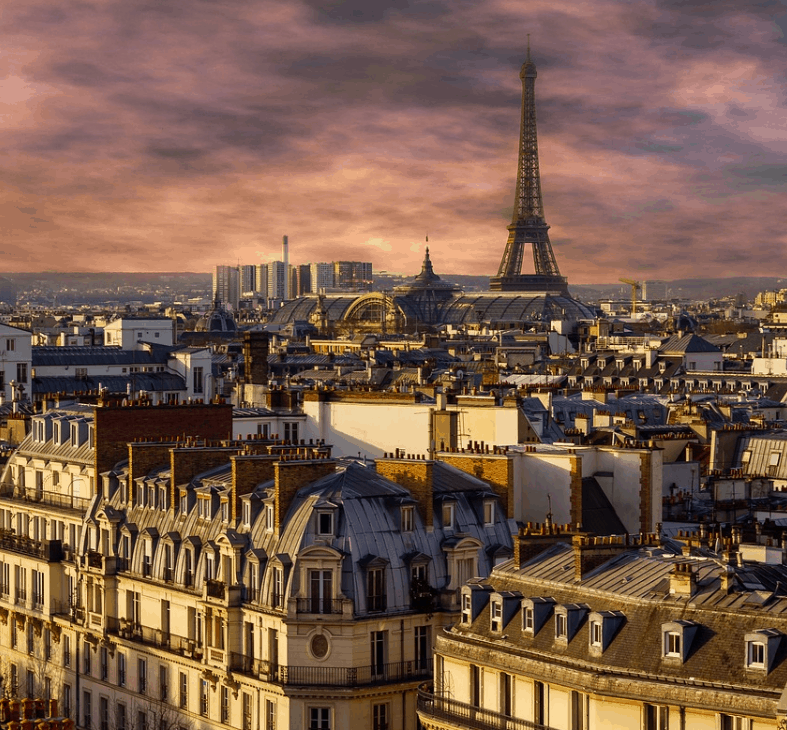
15. Not all protesters changed their mind
Another one of those hardcore protesters was Guy de Maupassant, a French Author of the late 19th century.
A funny anecdote regarding de Maupassant is that he reportedly ate in the tower’s restaurant every single day because it was the only restaurant in the city where you couldn’t actually see it.
A similar anecdote is going around about Tour Montparnasse with the claim that it has the most amazing observation deck in Paris because it’s the only one where you can’s see the skyscraper!
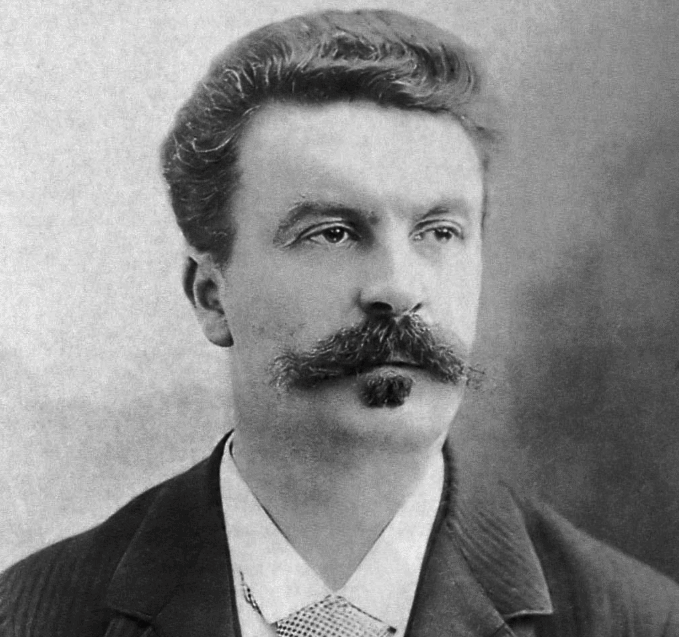
16. The Eiffel Tower was constructed in record time
It was the first time in human history that a building over 300 meters tall was constructed. because it needed to be ready for the Exposition in 1889, there was a deadline very soon.
It seemed like an impossible task, since digging the foundations only started on January 28, 1887.
Nevertheless, the tower was finished on March 31, 1889, in a record time of 2 years, 2 months, and 5 days.
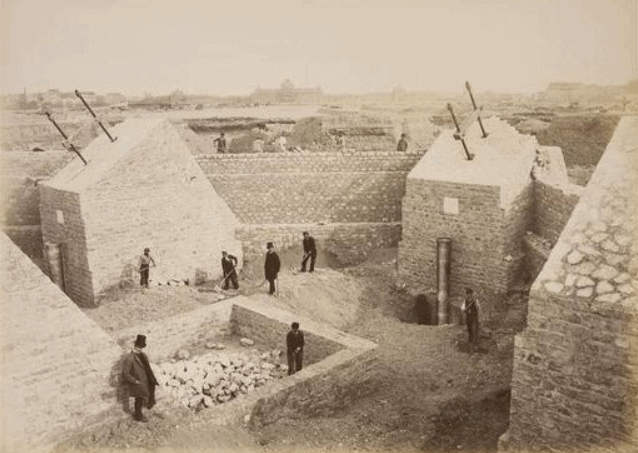
17. A lot of iron had to be assembled
Digging the foundations was a huge endeavor and it was only finished on June 30, 1887. But the hardest part was yet to come.
The Eiffel Tower consists of over 18,000 pieces of iron, 18,038 to be exact. These are mostly made of wrought iron and all of these pieces had to be assembled.
We can imagine that the construction workers didn’t want to see another bolt for the rest of their lives.
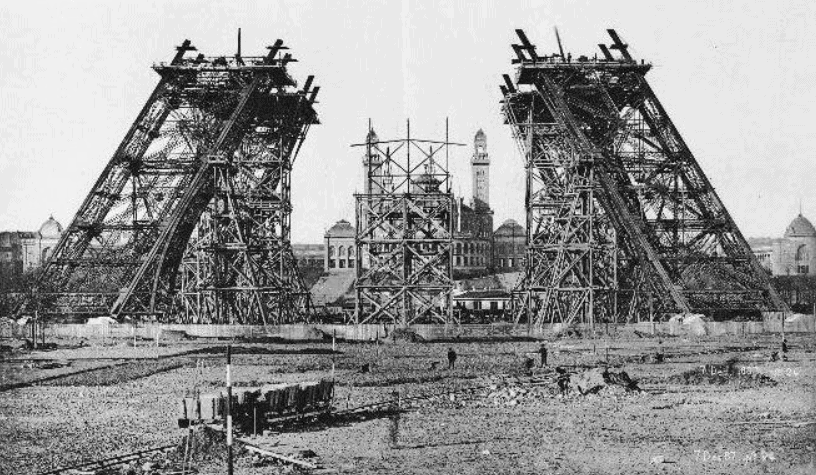
18. The preparatory work behind the scenes was enormous
Considering that the holes for the bots had to be specified at a precision of less than 1 millimeter (0.04 in), it was paramount that the preparation for this enormous endeavor was on point.
Behind the scenes, the drawing office produced 1,700 general drawings and 3,629 detailed drawings of the 18,038 parts and more importantly, how they had to be assembled.
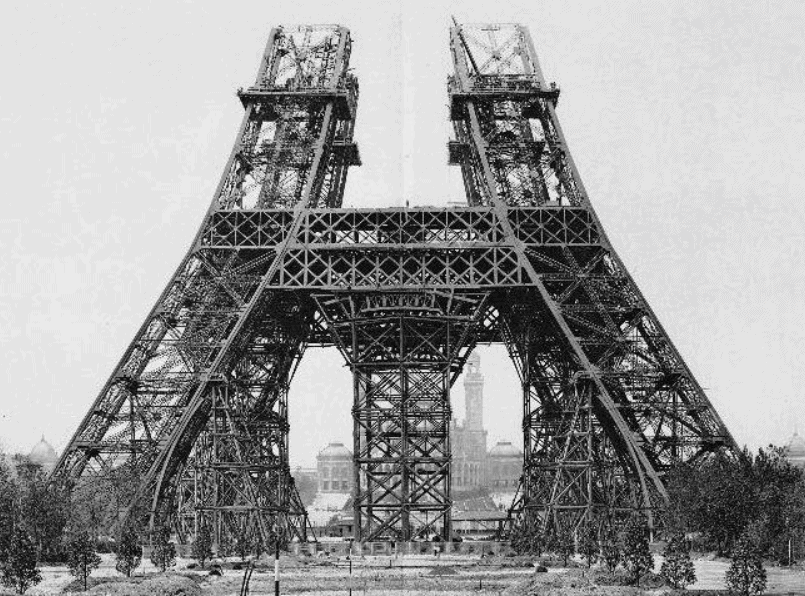
19. Who would climb to the top without lifts?
Lifts needed to be in place to bring passengers to the top of the Eiffel Tower. Granted, staircases are allowing you to climb to the top, but how many people would actually do such an exhausting thing?
The most complicated lift was that to the second floor as it didn’t have a straight path. To make things worse, not a single French company wanted to take the project on.
The deadline was extended and the lifts were eventually installed by the American company “Otis Brothers & Company.”
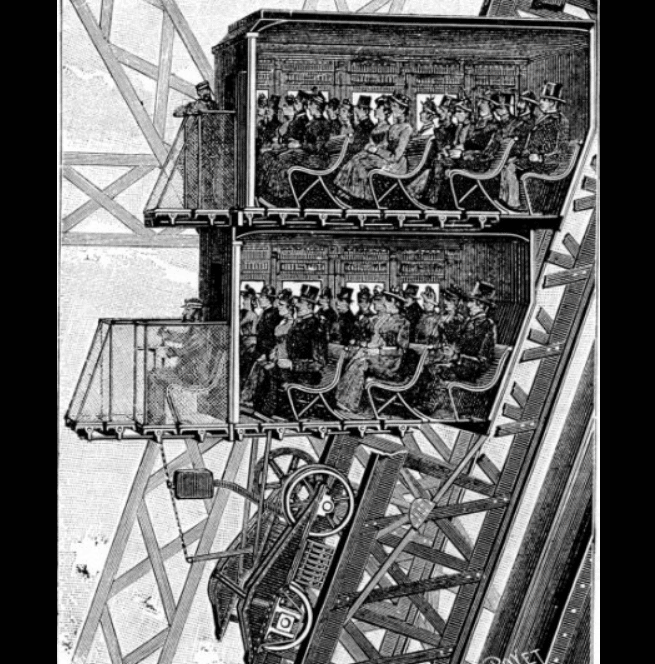
20. The Eiffel Tower was officially inaugurated
The construction of the Eiffel Tower was officially completed by the end of March 1889. This meant for a celebration, and to do so, Gustave Eiffel invited a group of government officials, accompanied by representatives of the press, to climb the tower on March 31.
Important note: The lifts weren’t functioning yet at this time!
Eiffel himself explained every single detail of the tower during the ascend, which took over an hour just to reach the first level. Many of the guests stayed there, but there were a few who climbed the tower all the way to the top as well, including one of the designers Emile Nouguier.
At 2:35 pm, Gustave Eiffel hoisted the French Tricolore on the first level and a 25-gun salute went off, which officially inaugurated what would become one of the world’s most iconic structures ever built!
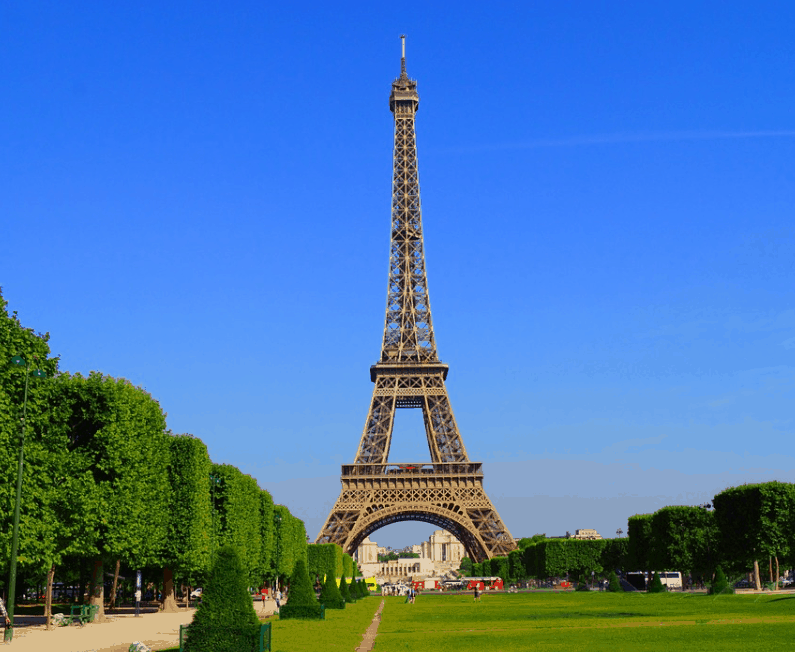
21. The Eiffel Tower opened to the general public
The Eiffel Tower wasn’t open for the general public until the opening of the Exposition Universelle on May 6, 1889.
It was an instant success, and even though the lifts didn’t work yet, over 30,000 people climbed the tower with the stairs during the first weeks.
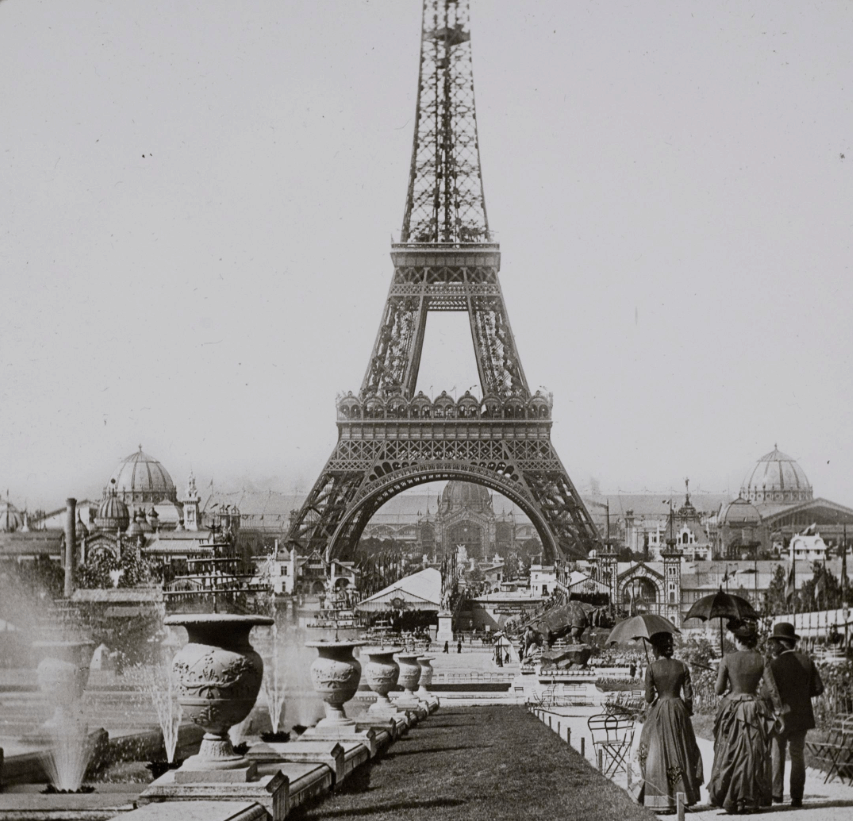
22. Nearly 2 million people ascended
When the lifts opened on May 26, the waiting lines were enormous. Everybody wanted to get a glimpse of Paris from the highest structure in the world at that time.
A total of 1,896,987 people paid 5 centimes to climb the Eiffel Tower during the exposition of 1889.
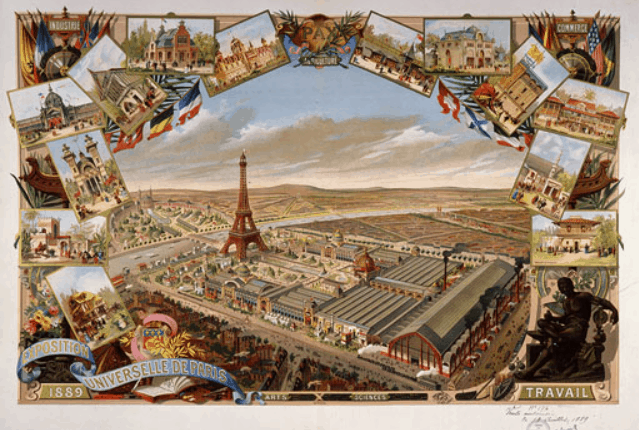
23. The Eiffel Tower was an amazing sight at night
The Eiffel Tower was an amazing sight during the Exposition Universelle 1889, as it was lit by hundreds of gas lamps at night.
A beacon sent out 3 beams of red, blue, and white lights in the colors of the French flag and spotlights were shining from the top, highlighting the other buildings of the Exposition.
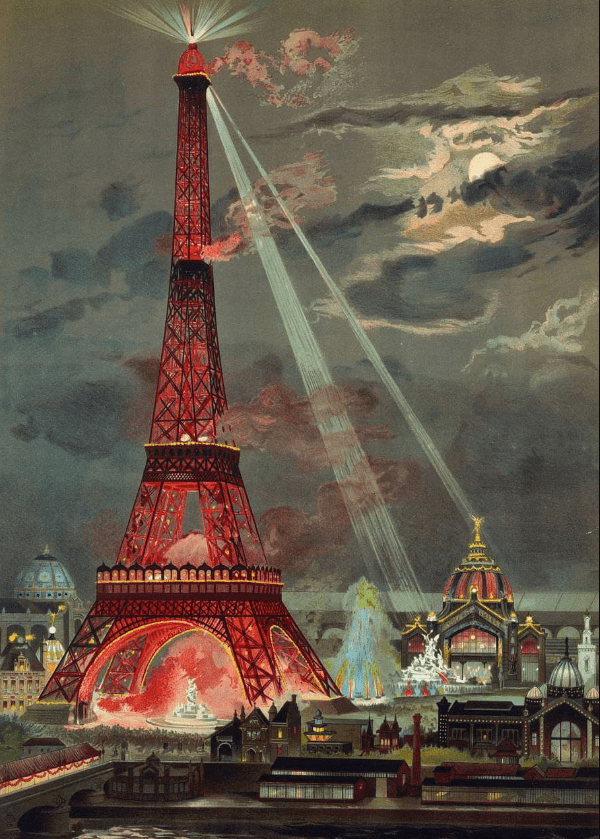
24. The Eiffel Tower received a famous visitor
One of the most notable visitors of the Eiffel Tower, apart from the Prince of Wales, was Thomas Edison, the famous American inventor, who visited the Eiffel Tower on August 14, 1889.
he had a meeting with Gustave Eiffel at his private apartment at the top of the Eiffel Tower, and Edison wrote this in the guestbook:
To M Eiffel the Engineer the brave builder of so gigantic and original specimen of modern Engineering from one who has the greatest respect and admiration for all Engineers including the Great Engineer the Bon Dieu, Thomas Edison.
Note of Thomas Edison in the Eiffel Tower’s guestbook
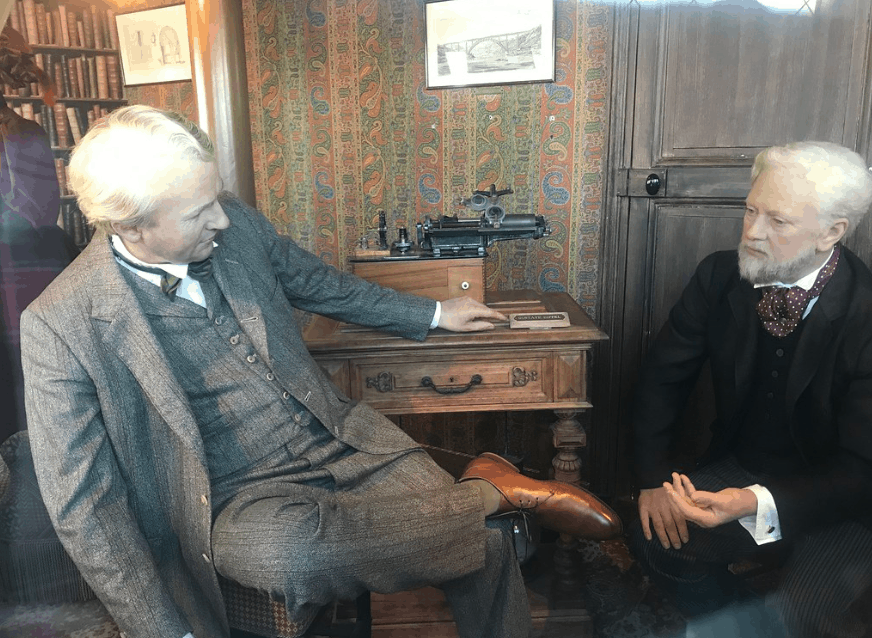
25. The public opinion about the Eiffel Tower changed
Just as Gustave Eiffel had expected when he got a permit to own the tower for 20 years, it became immensely popular even before the 20-year period had passed.
The Eiffel Tower became a symbol of Paris and the entire country after Guillaume Apollinaire wrote a nationalist poem in the shape of the tower to express his feelings about the war against Germany.
This Calligram set the tone for the Eiffel Tower becoming one of the most iconic structures in all of human history!
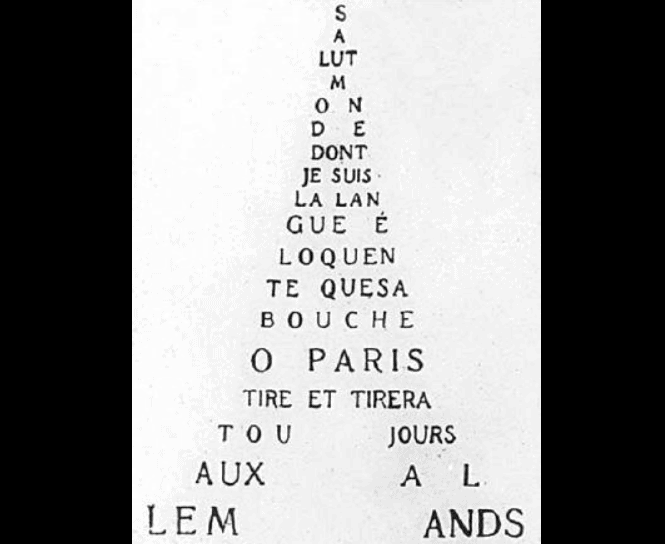
More interesting facts about the Eiffel Tower
26. The entrance of the Exposition Universelle of 1889 was 40 centimes. That was 4 times more than the price of a decent meal in a restaurant at that time in Paris.
27. Additionally, if you wanted to visit some of the exposition’s attractions, you needed to pay extra as well. People that wanted to climb the Eiffel Tower during the exposition had to pay 5 centimes.
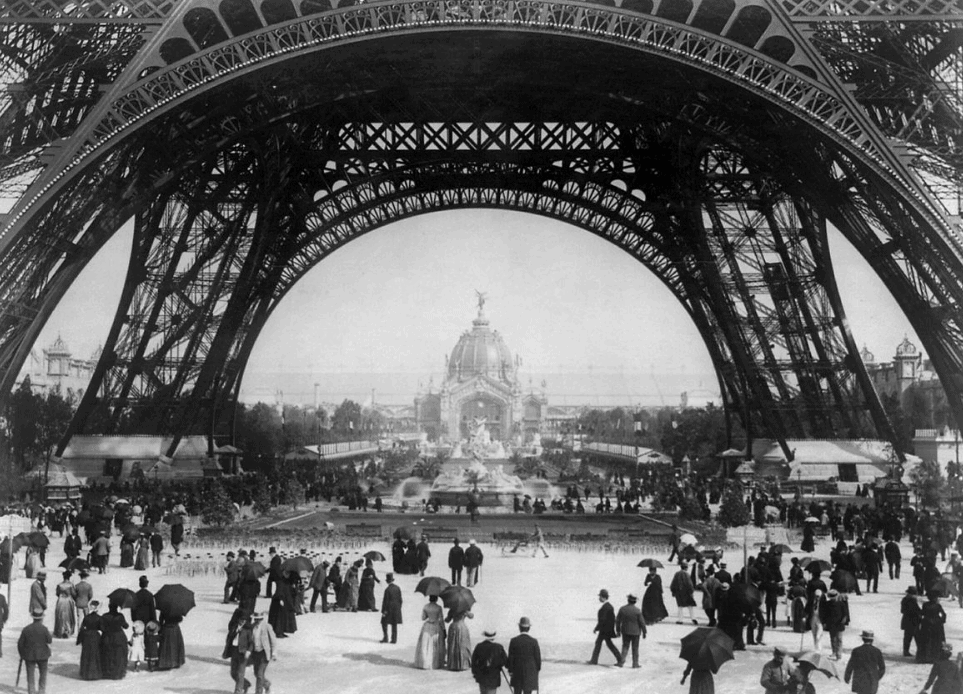
28. The total cost of the Exposition was 41,500,000 Francs, while the income was 49,500,000 Francs. This means a profit of 8 million Francs was realized which, along with the exposure to foreign investments to stimulate the economy, made it a huge success.
29. The Exposition Universelle has been held a total of 8 times in Paris between 1855 and 1937. The Exposition of 1889 was the fourth time it was held in France’s capital.
30. Gustave Eiffel’s proposal was the one chosen out of the 107 proposals that were submitted to become the centerpiece of the Exposition Universelle of 1889.
31. One of the main criteria of the contest was that the structure would be easy to dismantle. Since the Eiffel Tower consists of pieces of iron that are assembled definitely a huge benefit to win the competition.
32. Gustave Eiffel has built a lot more famous structures (apart from the Eiffel Tower and his contribution to the Statue of Liberty) in France and multiple other countries in Europe, including the Garabit Viaduct, an impressive railway arch bridge in the mountainous Massive Central region.
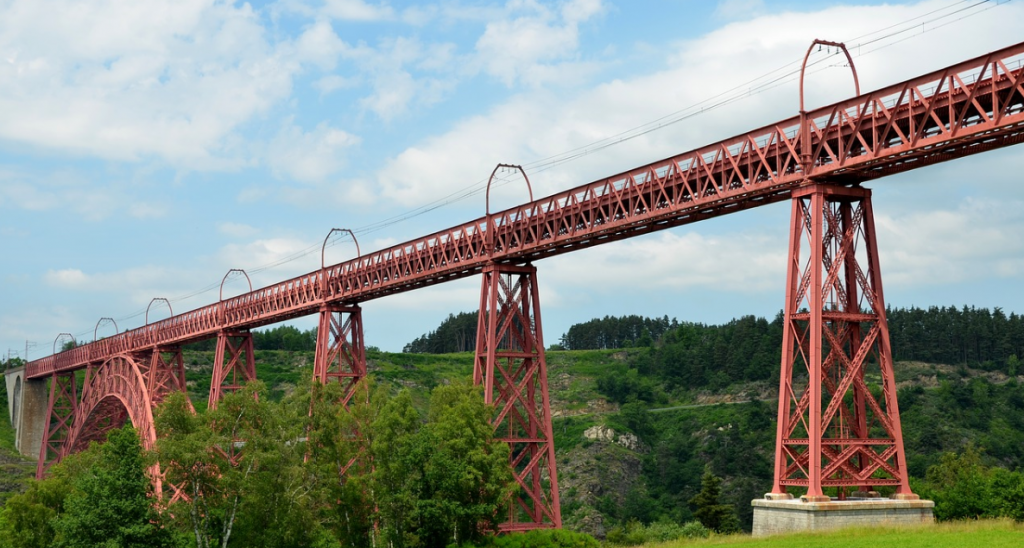
33. The Latting Observatory, on which the design of the Eiffel Tower was based, also had the name of its creator. The tower was created by Waring Latting. Another remarkable resemblance is that it also wasn’t designed by Latting himself, but by his architect William Naugle.
34. The Eiffel Tower’s ultimate inspiration has also been dubbed by some as New York’s first skyscraper. The oldest still existing skyscraper in New York is the Flatiron Building which was constructed in 1901.
35. Gustave Eiffel’s plan wasn’t the only one that was submitted as a proposal for the centerpiece of the Exposition Universelle of 1889. It was, however, the only one that was practical and covered all the details needed to move forward.
36. Gustave Eiffel actually worked together on a project just a few years earlier in 1886 with one of the main critics of the Eiffel Tower, Charles Garnier. Garnier was the main designer of the Nice Observatory. Gustave Eiffel created the most important part of the observatory, the dome.
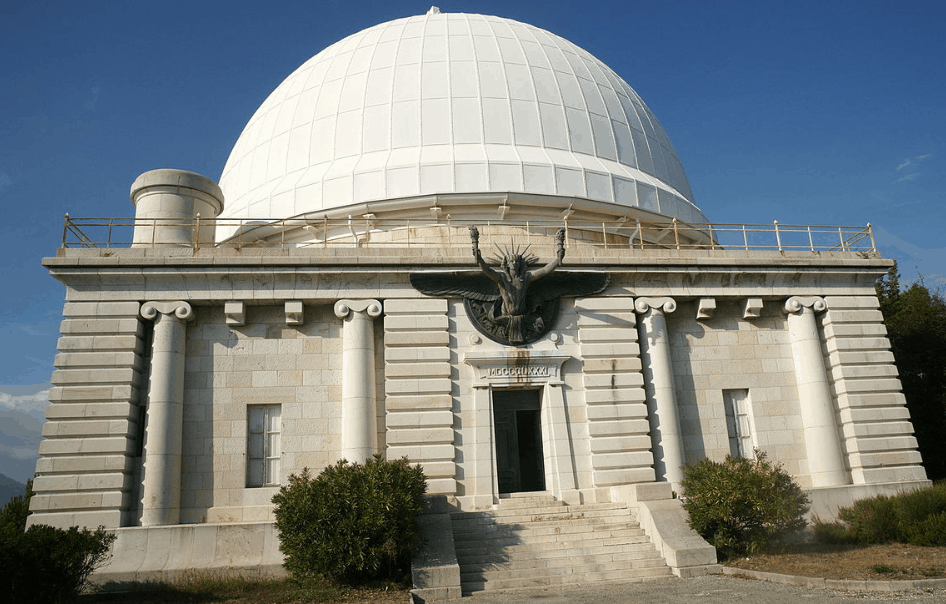
37. Because the Eiffel Tower consists of so much iron, it is listed as a “steel structure” in the international database of skyscrapers.
38. During the construction of the Eiffel, over 250 on-site construction workers were assembling all the pieces of iron. Because of the huge safety precautions taken, no lethal accidents occurred.
39. During the assembly, the bolts that held the pieces of iron together were replaced by a total of 2.5 million rivets which were inserted with sledgehammers.
40. An interesting fact about the Eiffel Tower’s construction is that the rivets were first heated before they were inserted. When they cooled down they would expand and ensure a very tight fit.
41. The original lifts in the Eiffel Tower, which were created by the American company “Otis Brothers and Company,” were able to carry up to 65 passengers and weighed 10,000 kilos each.
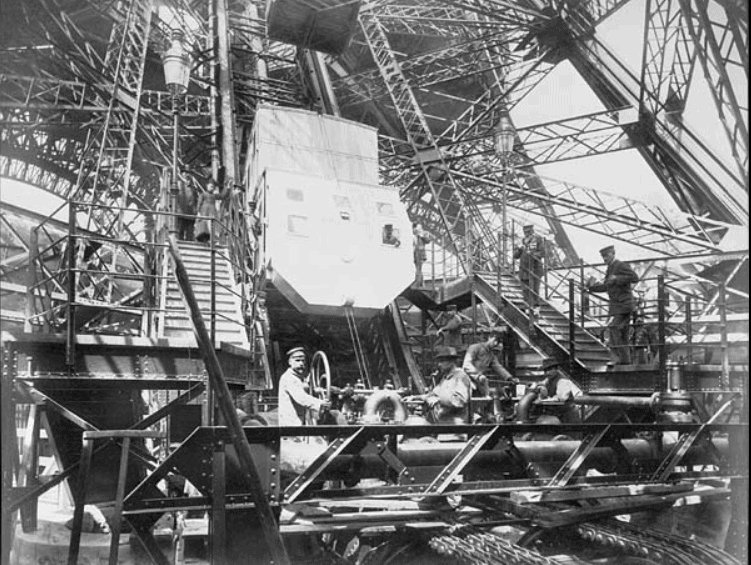
42. The lifts to go up to the third floor only went half the distance. In order Toe third floor, passengers had to switch lifts which were connected through a small gangway.
43. Gustave Eiffel had a private apartment at the top of the Eiffel Tower, and he used this in his later years to carry out meteorological observations.
44. The Eiffel Tower proved to be very important when the Germans were hindered by a radio signal being disturbed because of it. This seriously hindered their advance at Paris at the beginning of WWI and resulted in an Allied victory at the First Battle of the Marne.
45. Just as the Brooklyn Bridge had been sold to naive immigrants in New York, a con artist named Viktor Lustig was able to sell the Eiffel Tower. Not just that, he was able to sell the Eiffel for scrap metal on two separate occasions in 1925!
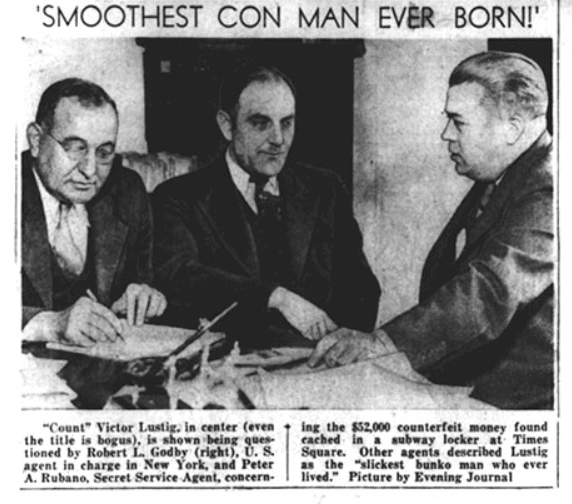
46. To protect the tower from the German invaders in WWII, the lifts in the tower were cut and the tower was closed to the public for the duration of the war. The lifts weren’t repaired until 1946. Germans that wanted to hoist nazi flags had to climb all the way up the tower.
47. One of the weirdest facts about the Eiffel Tower is that it was almost relocated to…Montreal in Canada! Remarkably, the Then-president of France Charles de Gaulle agreed to the deal of disassembling the Eiffel Tower and reconstructing it in Montreal for the expo of 1967. The plot was stopped however by the company operating the tower because they feared they would never see the Eiffel Tower again.
48. The original lifts between the second and third levels were only replaced after 97 years of service. This happened in 1982 and the new lifts that were installed reduced the time to reach the top from 8 to less than 2 minutes.
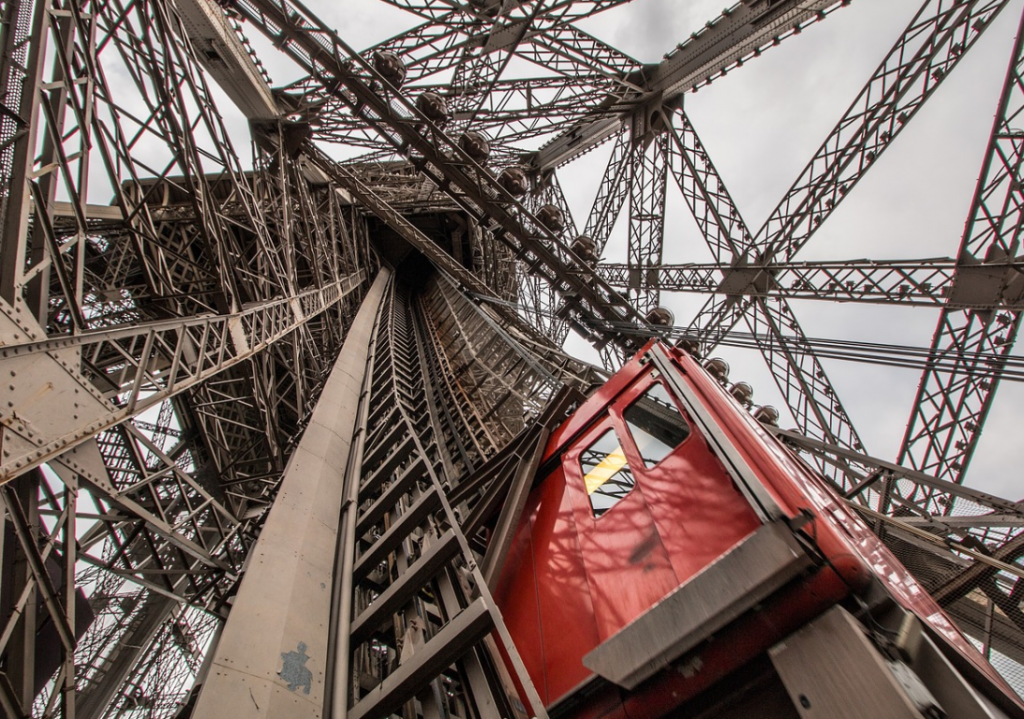
49. A.J. Hackett, the New Zealand thrill-seeker, jumped off the top of the Eiffel Tower back in 1987. Even though he was arrested, it helped to gain worldwide attention for the extreme form of entertainment called “bungee jumping.”
50. Another famous stunt that happened 3 years earlier was that of Robert Moriarty when he flew a Beechcraft Bonanza under the Eiffel Tower on March 31, 1984.
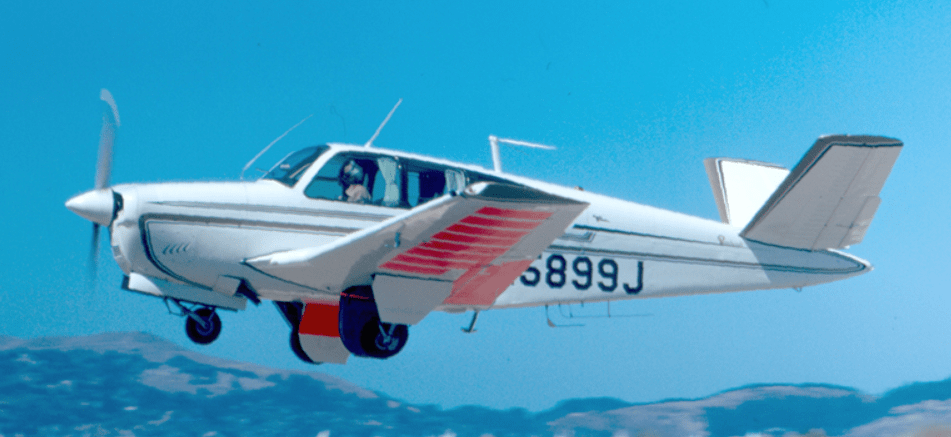
51. The number of visitors that the Eiffel Tower receives every year is staggering. Tne tower welcomed visitor number 200 million in 2002 and has since been at full capacity every single year. This means it welcomes nearly 7 million visitors per year.
52. Huge fire displays take place every year on July 14, the French National Day which commemorates the Storming of the Bastille, the (unofficial) start of the French Revolution in 1889.
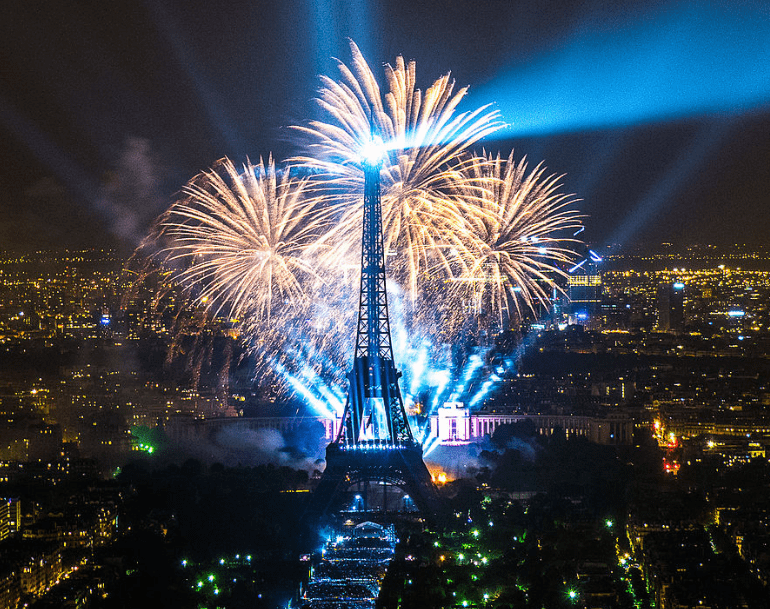
53. The Eiffel Tower was the tallest building in the world for 41 years from 1889 until 1930, when it was surpassed by the Chrysler Building in New York City. Remarkably, it surpassed the Chrysler building in height again when the antenna was added to the top of the Eiffel Tower in 1957.
54. The Eiffel Tower became the tallest man-made structure ever created the moment it surpassed the Washington Monument which is 169 meters high (555 ft).
55. The first replica that was ever created was completed just 5 years after the real Eiffel Tower opened its doors. The mayor of Blackpool in England, Sir John Bickerstaffe, was so impressed with the Eiffel Tower when he visited Paris that he decided to make a replica. The “Blackpool Tower” was opened on May 14, 1894, and was with 518 feet (158 meters) the tallest man-made structure in the British Empire at that time.
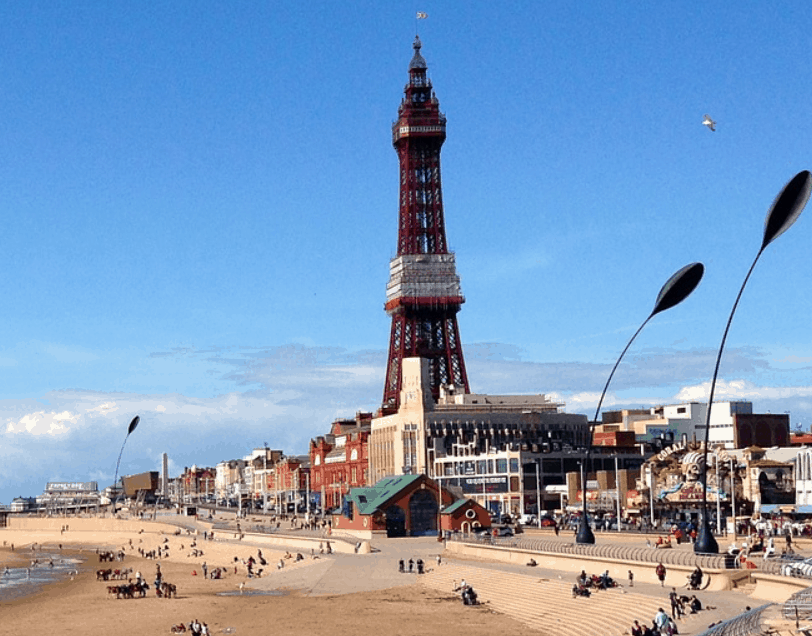
56. Another famous replica is the Tokyo Tower in Tokyo, Japan. There are also various replicas in the United States, including a half-scale version at the “Paris Las Vegas“, Nevada, one in Paris, Texas that was built in 1993, and two 1:3 scale models at Kings Island, Ohio.
57. The Eiffel Tower has been used as a radio transmitter since the beginning of the 20th century, and a permanent underground radio station has been constructed near the south pillar.
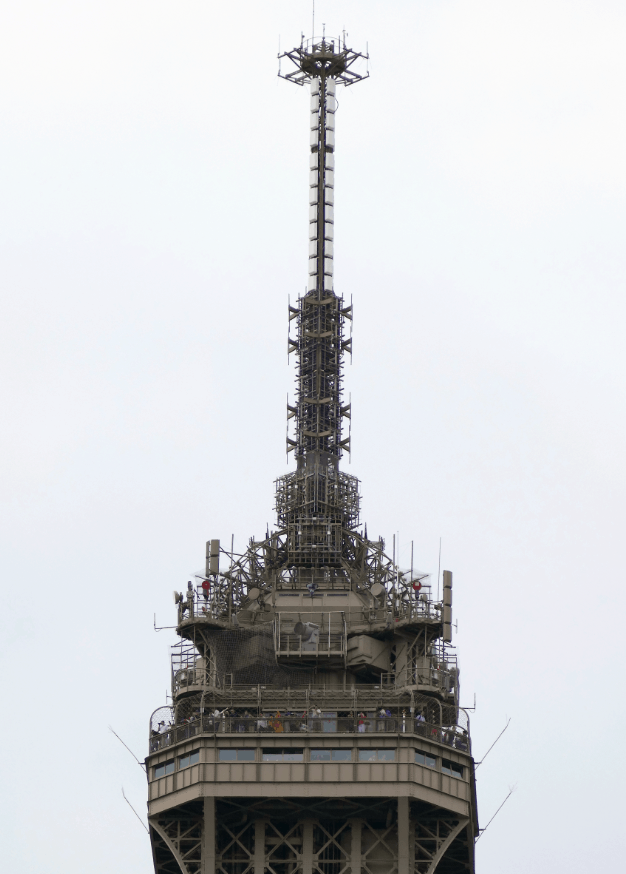
58. The Eiffel Tower is the most-visited paid-for monument in the world, so you will likely wait in line before you can go to the top.
59. A building in the vicinity of the Eiffel Tower is the École Militaire. That’s the reason why the park that the Eiffel Tower is located in is called the “Champ de Mars,” a reference to the “Campus Marius” in Rome which was called after the Roman god of war.
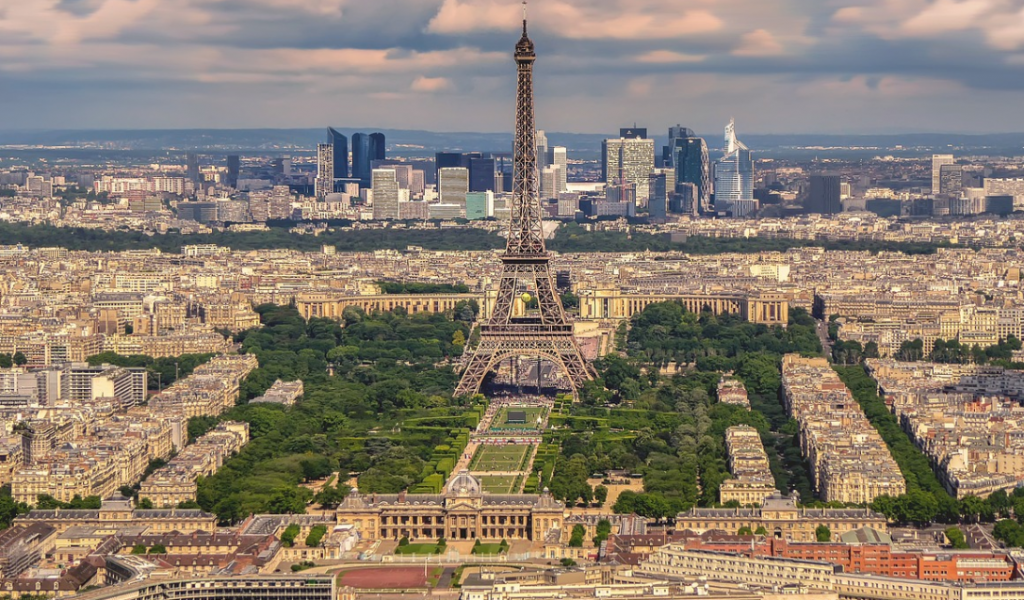
60. The military school that is located near the Eiffel Tower often used the Champ de Mars to perform military drills and marches.
61. The names of the 72 most prominent French scientists, engineers, and mathematicians are engraved in the tower in honor of their contribution to the tower.
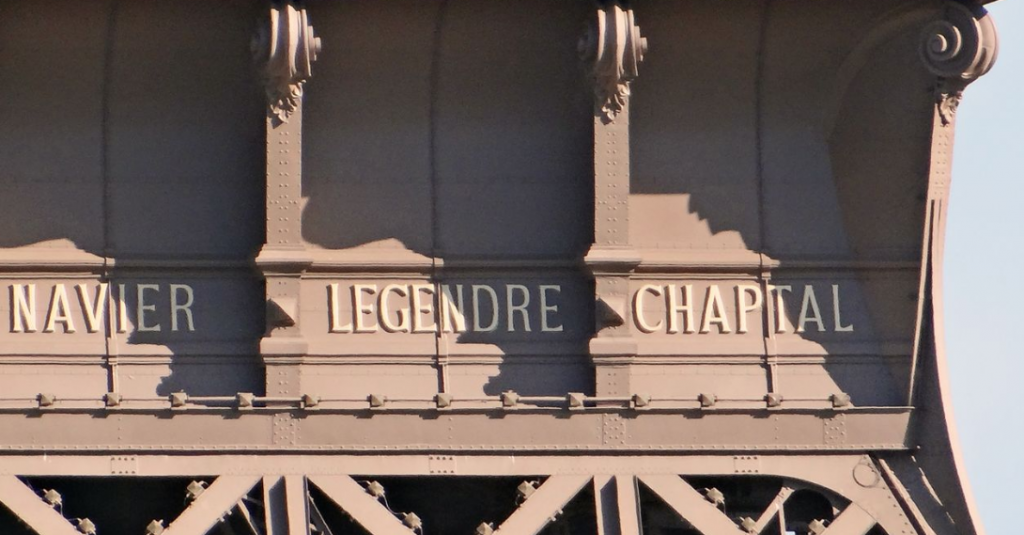
62. The Eiffel Tower didn’t always have the same color as it has today. Initially, it was more reddish-brown until it was changed to a bit more bronze in 1968, a color that has been referred to as “The Eiffel Tower Brown.”. At the moment it actually has 3 shades of colors, lighter at the top and becoming darker towards the bottom, in an effort the Parisian skyline.
63. A study conducted by “National Geographic Australia” concluded that it would cost about USD 480 million to construct a replica of the Eiffel Tower today. That would be more than 10 times what it originally cost, 8 million Francs, which is the equivalent of just over USD 40 million today.
64. Just as from the Sacré-Coeur, the Eiffel Tower offers amazing views of Paris. Can you spot the immense Louvre and peculiar Centre-Pompidou in the historical center of Paris in the picture below?
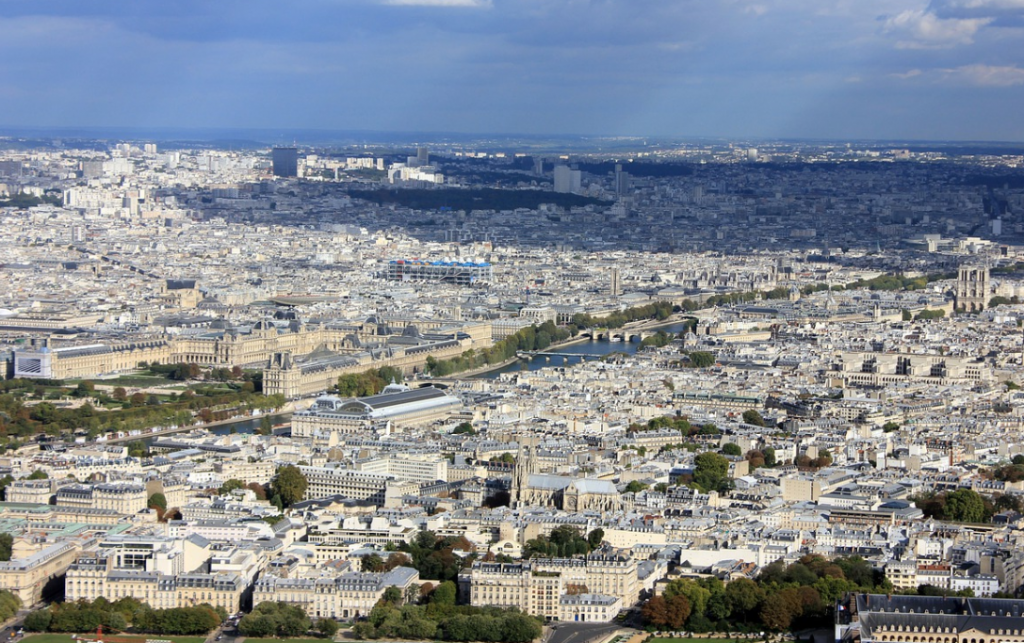
Quick Facts About the Eiffel Tower
- 65. The iron of the Eiffel Tower weighs 7,300 tonnes.
- 66. The architectural height is 300 meters (984 ft).
- 67. The height of the tip is 324 meters (1063 ft).
- 68. The height of the top floor is 276 meters (906 ft).
- 69. There are a total of 3 floors and 8 elevators.
- 70. 6.91 million people visited the Eiffel Tower in 2015.
- 71. The observation deck at 276 meters is the highest in the EU
- 72. To reach the first level you need to climb over 300 steps.
- 73. The same amount of steps will take you to the second level.
- 74. Over 25,000 people ascend the Eiffel Tower on average every single day!
- 75. The Eiffel Tower can sway up to 9 centimeters (3.5in) when there’s wind.
- 76. 60 tonnes of paint is used to paint the Eiffel Tower every 7 years.
